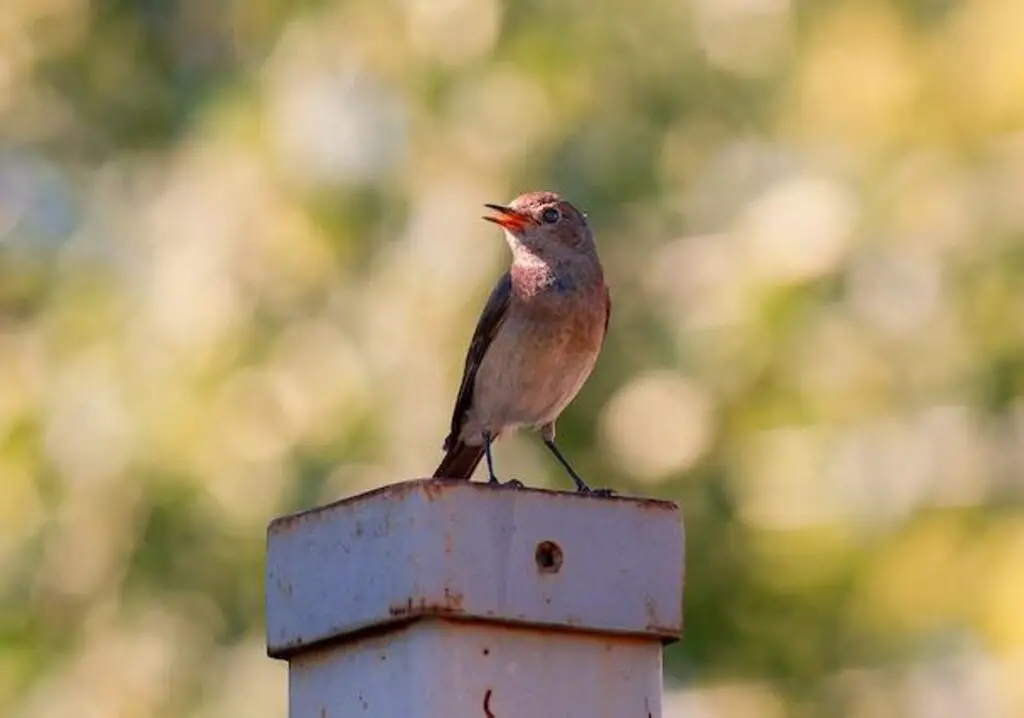Are you looking to bring more birds into your backyard and create a serene atmosphere? Using sounds to attract birds is an effective and natural way to do so. Bird sounds have been used for centuries to communicate and establish territory, and now you too can use these techniques to create a bird-friendly environment.
In this article, we will discuss the best bird sound techniques for attracting birds, including identifying bird sounds, creating a bird-friendly soundscape, using recorded bird sounds, mimicking bird sounds, the power of bird sound therapy, and much more.
Table of Contents
- 1 Key Takeaways:
- 2 How To Attract Birds With Sounds?
- 3 Understanding the Importance of Bird Sounds
- 4 Identifying Bird Sounds
- 5 Creating a Bird-Friendly Soundscape
- 6 Using Recorded Bird Sounds
- 7 Mimicking Bird Sounds
- 8 The Power of Bird Sound Therapy
- 9 Maintaining an Attractive Bird Habitat
- 10 Attracting Specific Bird Species with Sounds
- 11 Conclusion
- 12 FAQs: How To Attract Birds With Sounds?
- 12.1 How can I attract birds to my backyard?
- 12.2 What role do bird sounds play in attracting birds?
- 12.3 How can I identify different bird sounds?
- 12.4 How can I create a bird-friendly soundscape?
- 12.5 Can I use recorded bird sounds to attract birds?
- 12.6 How can I mimic bird sounds to attract birds?
- 12.7 What is bird sound therapy?
- 12.8 How can I maintain a bird-friendly habitat?
- 12.9 Can I attract specific bird species with sounds?
- 13 Author
Key Takeaways:
- Bird sounds are a natural and effective way to attract birds to your backyard.
- The art of identifying and mimicking bird sounds can help create a bird-friendly ecosystem.
- Using recorded bird sounds and creating a bird-friendly soundscape can also help attract specific bird species.
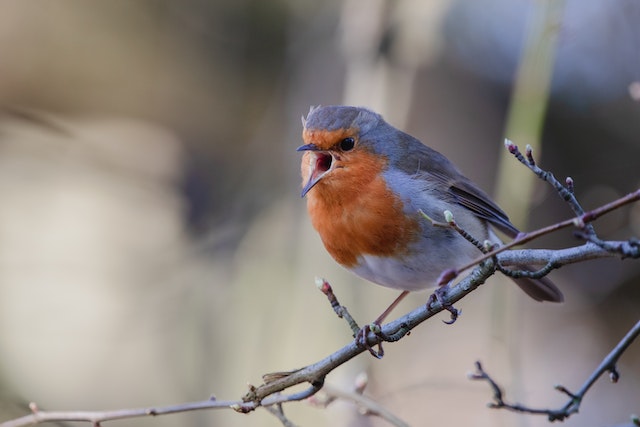
How To Attract Birds With Sounds?
Attracting birds with sounds is a great way to enhance your backyard birdwatching experience. To get started, you can try playing bird songs or calls through a speaker or recording device. There are many resources available online or in birdwatching guides that provide recordings of different bird species.
You can also try making your own bird calls by whistling or using a bird call whistle. Another effective way to attract birds is to create a bird-friendly environment with plenty of food, water, and shelter.
This might include planting native plants that produce berries or seeds, providing bird feeders with different types of birdseed, or setting up a bird bath or fountain.
Additionally, you can try mimicking bird sounds yourself, such as imitating a bird’s call or singing a song. However, it’s important to be respectful of birds and their natural behaviors, and to avoid disturbing them or causing them harm.
With some patience and practice, you can attract a variety of bird species to your backyard and enjoy the sights and sounds of these fascinating creatures.
Understanding the Importance of Bird Sounds
Bird sounds play a vital role in attracting birds to your backyard. Natural bird sounds such as chirping, singing, and calling are part of birds’ communication and territorial behaviors. By understanding the importance of bird sounds in attracting birds, you can manipulate them to create an inviting environment for your feathered friends.
One key aspect of bird sounds is their naturalness. Birds are naturally attracted to sounds that are familiar to them. For instance, they respond to the calls and songs of their own species and are naturally cautious when confronted with unfamiliar bird sounds. To attract birds to your backyard, it’s important to use bird call sounds that are familiar to the birds you are hoping to attract.
Another aspect of bird sounds is their variety. Just like humans, birds have unique personalities and preferences. They respond differently to different sounds, even from the same species. Understanding the different bird call sounds and their meanings can help you identify the birds you are trying to attract and cater to their preferences.
Using sounds to attract birds is an effective and natural way to invite them to your backyard. By mimicking natural bird sounds or playing them through a speaker, you can create a genuine and appealing environment for your feathered friends. Understanding the importance of bird sounds is the first step in mastering the art of attracting birds with sounds.
Identifying Bird Sounds
If you want to attract birds with sound, it’s essential to be able to identify the different bird calls and songs. Each bird species has a unique sound that communicates specific messages. Once you know what to listen for, you can choose the right bird sound techniques for attracting birds to your backyard.
Here are some tips on identifying bird sounds:
- Start with the most common bird calls: Birds have different calls for different situations, including alarm calls, mating calls, and territorial calls. Some of the most common bird calls include the chickadee’s “dee-dee-dee” and the robin’s “cheer-up, cheerily.”
- Listen for the pattern: Many bird calls have a distinct pattern that makes them easier to recognize. For example, the song sparrow’s melody starts with several clear notes followed by a trill.
- Use a birding app: There are many apps available that can help you identify bird sounds. Just record the sound you hear and let the app identify the bird species for you. Some popular birding apps include Merlin Bird ID, Audubon Bird Guide, and iBird.
Identifying bird songs
While bird calls are short and simple, bird songs are more complex and can last for several seconds. Learning to recognize bird songs can be a bit trickier, but it’s worth the effort if you want to attract a wider variety of bird species. Here are a few tips:
- Pay attention to the melody: Bird songs usually have a distinctive melody that repeats several times. For example, the American Goldfinch’s song has a lilting, bubbly quality.
- Look for variations: Many birds incorporate variations into their songs, such as changing the pitch or tempo. These variations can help you identify the specific bird species.
- Practice, practice, practice: The more you listen to bird songs, the easier it will be to identify them. Take some time each day to listen to the birds around you and try to identify their songs.
Once you’ve identified the different bird sounds in your area, you can start using them to attract birds to your backyard.
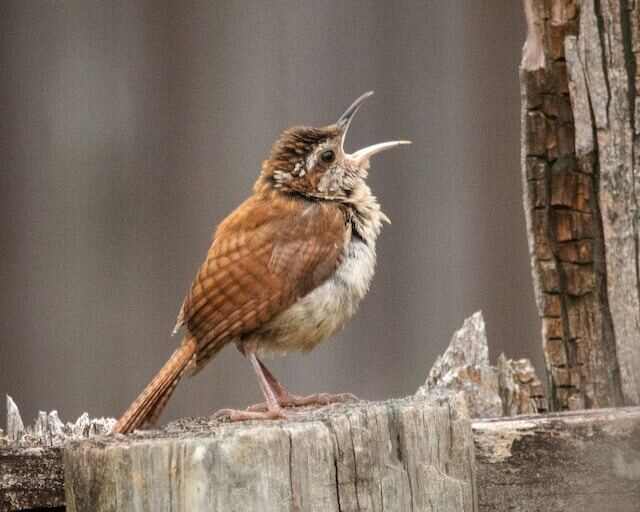
Creating a Bird-Friendly Soundscape
Designing a bird-friendly soundscape can be a fun and creative process that benefits both birds and humans. Incorporating natural elements like water features and bird feeders can provide birds with food and shelter, while also creating an attractive environment for birdwatching and relaxation.
When thinking about creating a soundscape, it is essential to consider the variety of bird species that may visit your backyard. Different birds are attracted to different sounds, so incorporating a range of bird sound techniques can help to increase your chances of attracting a diverse population of birds.
Water Features
Water features, such as bird baths and fountains, can be a great addition to any bird-friendly soundscape. The sound of running water can attract a wide variety of bird species, including those that are not typically found in your area. Try to incorporate a shallow area in your bird bath to attract ground-dwelling birds, and make sure to regularly clean and refill the water to prevent the spread of disease.
Bird Feeders
Bird feeders are an excellent way to attract birds to your backyard and provide them with a reliable source of food. When choosing a bird feeder, consider the type of birds you want to attract and the type of food they prefer. For example, hummingbirds are attracted to nectar, while finches prefer nyjer seed. Make sure to clean your bird feeder regularly to prevent the spread of disease.
Soundscape Design
When incorporating bird sounds into your soundscape design, it is important to consider the volume and timing of the sounds. Too much sound can be overwhelming and may deter birds from visiting. Try to create a natural ebb and flow of sounds throughout the day, mimicking the sounds of dawn and dusk when birds are most active.
Keep in mind that sounds from human activities, such as lawnmowers and traffic, can disrupt a peaceful bird-friendly soundscape. Try to create a barrier between your backyard and the sounds of the outside world, such as planting a line of trees or installing a fence.
To fully immerse yourself in the sounds of nature, consider installing a sound system that can play a variety of bird sounds throughout the day. This can create a calming and relaxing environment for both birds and humans.
Using Recorded Bird Sounds
Recorded bird sounds are an effective way to attract birds to your backyard. They provide a variety of bird calls that can entice different species, and they can be played at any time of the day. Here are some tips for using recorded bird sounds:
- Choose high-quality recordings that accurately capture the sounds of birds in their natural habitats.
- Play the sounds at appropriate times of the year when birds are most likely to be present.
- Use a good quality speaker to ensure the sound travels a good distance.
- Control the volume of the recordings to avoid scaring the birds away.
- Rotate the sounds frequently to prevent birds from becoming accustomed to them.
- Be patient as it may take some time for the birds to become familiar with the sounds and start visiting your property.
It’s important to note that using recorded bird sounds should not be relied on exclusively for attracting birds to your backyard. Creating a rich and diverse habitat with natural elements like plants, water features, and bird feeders will attract birds naturally. Using recorded bird sounds should be seen as an additional tool in your bird-watching arsenal.
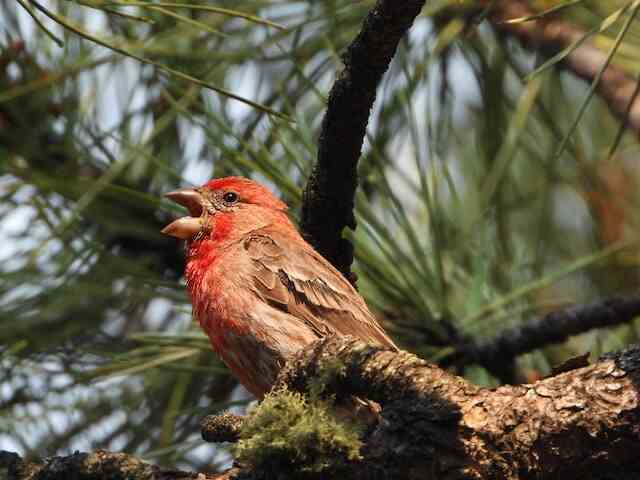
Mimicking Bird Sounds
One of the most fascinating aspects of attracting birds with sounds is the art of mimicking bird sounds. This technique involves recreating the calls and songs of specific bird species to attract them to your backyard.
There are several popular techniques for mimicking bird sounds, including whistling, using a bird call, and even playing recordings of bird sounds. It’s important to note that while mimicking bird sounds can be effective, it’s also possible to scare away potential visitors if the sounds are too loud or inconsistent.
When using bird calls, it’s crucial to choose the right one for the species of bird you’re trying to attract. Some popular options include the American Goldfinch call, the Eastern Bluebird call, and the Northern Cardinal call. It’s important to practice using the bird call before attempting to attract birds with it, as too much repetition or incorrect use may scare them away.
In addition to bird calls, playing recordings of bird sounds can also be an effective technique for attracting birds. When choosing a recording, look for one that features the specific bird species you’re trying to attract, and play it at a low volume to avoid scaring them away.
It’s important to remember that mimicking bird sounds should be done in moderation and with caution. Too much noise or inconsistent sounds can turn off potential visitors, while well-timed and accurate bird calls can create a realistic and appealing soundscape for birds to visit and enjoy.
The Power of Bird Sound Therapy
Aside from attracting birds to your backyard, incorporating bird sounds into your soundscape can also have therapeutic benefits for both birds and humans. Bird sound therapy is a practice that uses the calming and soothing sounds of birds to create a natural, stress-free environment.
Studies have shown that listening to bird sounds can help reduce stress levels, improve mood, and promote relaxation and sleep. This is because bird sounds create a sense of connection to nature, which has been proven to have numerous health benefits.
When creating a bird-friendly soundscape, it’s important to consider the well-being of both the birds and humans who will be enjoying the space. Incorporating elements like bird feeders, water features, and native plants can provide a welcoming habitat for birds, while also creating a serene and calming atmosphere for humans.
To maximize the therapeutic benefits of bird sound therapy, it’s important to ensure that the soundscape is properly balanced and not overwhelming. A mix of natural bird sounds and recordings can create a harmonious atmosphere, while mimicking bird sounds can add to the authenticity of the space.
Whether you’re looking to attract birds to your backyard or create a natural, calming environment, incorporating bird sounds into your soundscape can have numerous benefits. So, get started on your bird-friendly journey today!
Maintaining an Attractive Bird Habitat
Once you have successfully created a bird-friendly soundscape and started attracting birds with audio, it’s important to maintain the habitat to continue their visitation. Proper management of the soundscape and environmental factors can ensure your backyard remains a safe and welcoming space for birds.
Feeding
Provide a consistent source of food for your feathered friends by keeping bird feeders clean and filled with appropriate seed mixtures. Different bird species have different food preferences, so research and select bird feeders or seed types that cater to the birds you want to attract.
Shelter
Offer a variety of shelter options, such as trees, bushes, and birdhouses, to create a safe and comfortable environment for birds to rest and nest. Make sure to clean out birdhouses between nesting seasons to prevent the spread of parasites.
Managing the Soundscape
Maintain the bird-friendly soundscape by regularly monitoring and adjusting the audio and environmental factors. Keep bird feeders and bird baths clean to prevent the spread of disease. Ensure the water feature is functioning properly to provide water for drinking and bathing.
Be mindful of any changes or disruptions to the soundscape, such as nearby construction or natural disasters, that can impact bird behavior and migration.
By maintaining a welcoming and safe habitat, you can ensure birds continue to visit and enjoy your backyard soundscape.
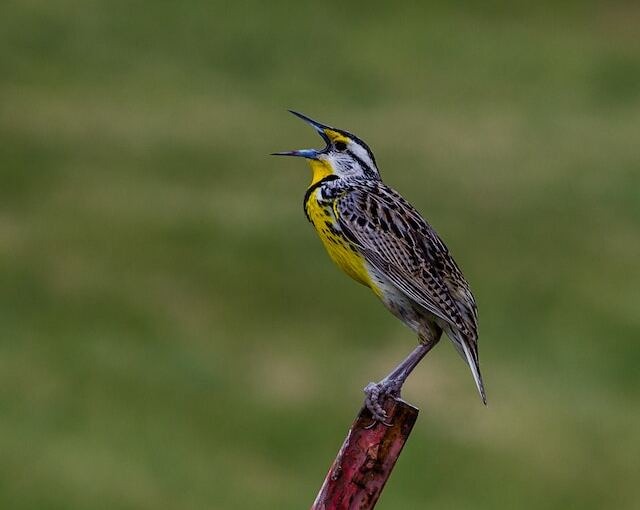
Attracting Specific Bird Species with Sounds
Each bird species has its own set of preferences when it comes to sounds. By understanding which sounds attract which birds, you can tailor your soundscape to target specific species.
For example, some birds are attracted to upbeat, rhythmic sounds, while others prefer more calming, gentle sounds. If you’re looking to attract hummingbirds, try playing a recording of a high-pitched, fast-paced trill. For thrushes, a mellow flute-like sound can be effective. Meanwhile, owls tend to respond well to low-frequency sounds, like deep hoots or low-pitched whistles.
In addition to playing recorded sounds, you can also mimic bird calls to attract specific species. For example, mimicking the call of a mourning dove can bring in other doves and pigeons.
Keep in mind that attracting certain bird species may require specific elements in your physical environment as well. For example, woodpeckers are often attracted to hollow trees and dead wood, while bluebirds prefer open areas with plenty of perches.
By doing your research and understanding the preferences of different bird species, you can create a soundscape that is customized to attract the birds you want to see.
Conclusion
Attracting birds with sounds can be a rewarding experience that enhances your backyard ecosystem and provides a calming environment for both you and your feathered visitors. By mastering the art of bird sound techniques, you can create a bird-friendly soundscape that appeals to a variety of species.
To get started, it is important to understand the importance of bird sounds and how they can communicate territorial behaviors and attract mates. Identifying bird sounds is also crucial in selecting appropriate audio recordings or mimicking calls.
Creating a bird-friendly soundscape involves designing a habitat that incorporates water features, bird feeders, and natural elements. Recorded bird sounds can also be used effectively, but the art of mimicking calls can be a powerful tool in attracting birds.
Bird sound therapy can enhance the benefits of attracting birds, providing a natural and calming environment for both humans and birds. Maintaining a healthy ecosystem involves proper feeding, providing shelter, and managing the soundscape.
By understanding the unique preferences of specific bird species, you can target their attraction to your backyard. So go ahead, grab some bird sound recordings or try mimicking calls, and enjoy the beautiful melodies of the birds in your backyard.
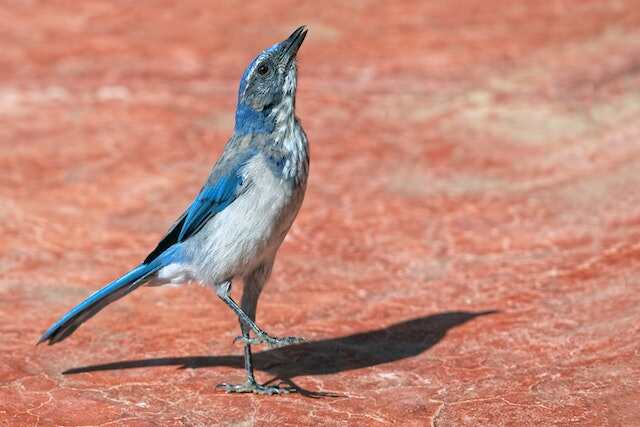
FAQs: How To Attract Birds With Sounds?
How can I attract birds to my backyard?
You can attract birds to your backyard by creating a bird-friendly environment that includes food sources, water features, and natural sounds.
What role do bird sounds play in attracting birds?
Bird sounds are effective in attracting birds because they mimic natural communication and territorial behaviors, signaling to other birds that an area is safe and abundant with resources.
How can I identify different bird sounds?
To identify different bird sounds, listen for common calls and songs. You can also use bird identification apps or reference guides to help you match the sound to the bird species.
How can I create a bird-friendly soundscape?
Designing a bird-friendly soundscape involves incorporating natural elements like water features and bird feeders. These elements provide birds with attractive focal points and a sense of safety.
Can I use recorded bird sounds to attract birds?
Yes, using recorded bird sounds can be beneficial in attracting birds. Choose recordings that are specific to the bird species you want to attract and play them at appropriate times.
How can I mimic bird sounds to attract birds?
Mimicking bird sounds can be done through various techniques such as whistling or using bird call devices. Learning the specific calls and songs of the birds you want to attract can increase your chances of success.
What is bird sound therapy?
Bird sound therapy is the use of bird sounds to create a calming and natural environment. It can be beneficial for both birds and humans, promoting relaxation and a sense of connection with nature.
How can I maintain a bird-friendly habitat?
To maintain a bird-friendly habitat, provide proper feeding, create shelter with trees and shrubs, and manage the soundscape by ensuring a variety of natural sounds are present.
Can I attract specific bird species with sounds?
Yes, certain bird species are attracted to specific sounds. Research the preferred sounds of the bird species you want to attract and incorporate them into your bird-friendly environment.

